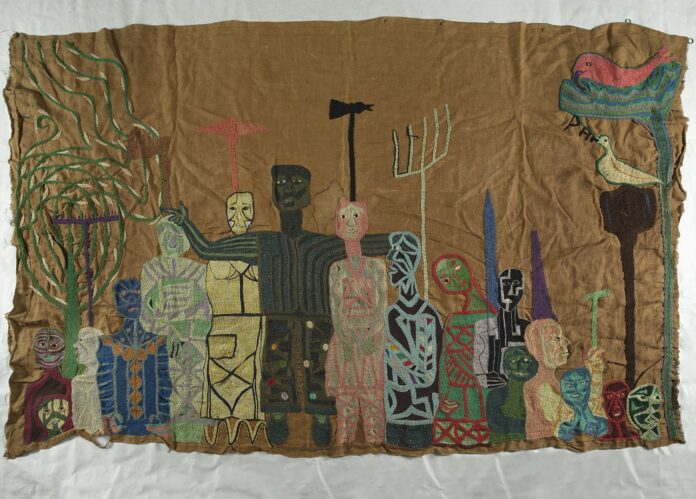The Cuban Revolution came about in a country subordinated to the US from all points of view. Although we had the façade of a republic, we were a perfect colony, exemplary in economic, commercial, diplomatic, and political terms, and almost in cultural terms.
Our bourgeoisie was constantly looking towards the North: from there, they imported dreams, hopes, fetishes, models of life. They sent their children to study in the North, hoping that they would assimilate the admirable competitive spirit of the Yankee ‘winners’, their style, their unique and superior way of settling in this world and subjugating the ‘losers’.
This ‘vice-bourgeoisie’, as Roberto Fernández Retamar baptised them, were not limited to avidly consuming whatever product of the US cultural industry fell into their hands. Not only that – at the same time, they collaborated in disseminating the ‘American way of life’ in the Ibero-American sphere and kept part of the profits for themselves. Cuba was an effective cultural laboratory at the service of the Empire, conceived to multiply the exaltation of the Chosen Nation and its world domination. Cuban actresses and actors dubbed the most popular American television series into Spanish, which would later flood the continent. In fact, we were among the first countries in the region to have television in 1950. It seemed like a leap forward, towards so-called ‘progress’, but it turned out to be poisoned. Very commercial Cuban television programming functioned as a replica of the ‘made in the USA’ pseudo-culture, with soap operas, Major League and National League baseball games, competition and participation programmes copied from American reality shows, and constant advertising. In 1940, the magazine Selections of the Reader’s Digest, published by a company of the same name, began to appear in Spanish in Havana with all of its poison. This symbol of the idealisation of the Yankee model and the demonisation of the USSR and of any idea close to emancipation was translated and printed on the island and distributed from here to all of Latin America and Spain.
The very image of Cuba that was spread internationally was reduced to a tropical ‘paradise’ manufactured by the Yankee mafia and its Cuban accomplices. Drugs, gambling, and prostitution were all put at the service of VIP tourism from the North. Remember that the Las Vegas project had been designed for our country and failed because of the revolution.
Fanon spoke of the sad role of the ‘national bourgeoisie’ – already formally independent from colonialism – before the elites of the old metropolis, ‘who happen to be tourists enamoured of exoticism, hunting, and casinos’. He added:
“We only have to look at what has happened in Latin America if we want proof of the way the ex-colonised bourgeoisie can be transformed into ‘party’ organiser. The casinos in Havana and Mexico City, the beaches of Rio, Copacabana, and Acapulco, the young Brazilian and Mexican girls, the thirteen-year-old mestizas, are the scars of this depravation of the national bourgeoisie.1″
Our bourgeoisie, submissive ‘party organisers’ of the Yankees, did everything possible for Cuba to be culturally absorbed by their masters during the neocolonial republic. However, there were three factors that slowed down this process: the work of intellectual minorities that defended, against all odds, the memory and values of the nation; the sowing of Martí’s principles and patriotism among teachers in Cuban public schools; and the resistance of our powerful, mestizo, haughty, and ungovernable popular culture, nurtured by the rich spiritual heritage of African origin.
In his speech ‘History Will Absolve Me’, Fidel listed the six main problems facing Cuba. Among them, he highlighted ‘the problem of education’ and referred to ‘comprehensive education reform’ as one of the most urgent missions that the future liberated republic would have to undertake.2 Hence, the educational and cultural revolution began practically from the triumph of 1 January 1959. On the 29th of that same month, summoned by Fidel, a first detachment of three hundred teachers alongside one hundred doctors and other professionals left for the Sierra Maestra to bring education and health to the most remote areas. Around those same days, Camilo and Che launched a campaign to eradicate illiteracy among the Rebel Army troops since more than 80% of the combatants were illiterate.
On 14 September, the former Columbia Military Camp was handed over to the Ministry of Education so that it could build a large school complex there. The promise of turning barracks into schools was beginning to be fulfilled, and sixty-nine military fortresses became educational centres. On 18 September, Law No. 561 was enacted, creating ten thousand classrooms and accrediting four thousand new teachers. The same year, cultural institutions of great importance were created: the Cuban Institute of Cinematographic Art and Industry (ICAIC), the National Publishing House, the Casa de las Américas, and the National Theatre of Cuba, which has a department of folklore and an unprejudiced and anti-racist vision unprecedented in the country. All of these new revolutionary institutions were oriented towards a decolonised understanding of Cuban and universal culture.
“Camilo and Che launched a campaign to eradicate illiteracy among the Rebel Army troops since more than 80% of the combatants were illiterate”
But 1961 was the key year in which a profound educational and cultural revolution began in Cuba. This was the year when Eisenhower ruptured diplomatic relations with our country. This was the year when our foreign minister, Raúl Roa, condemned ‘the policy of harassment, retaliation, aggression, subversion, isolation, and imminent attack by the US against the Cuban government and people’ at the UN.3 This was the year of the Bay of Pigs invasion and the relentless fight against the armed gangs financed by the CIA. This was the year when the US government, with Kennedy already at the helm, intensified its offensive to suffocate Cuba economically and isolate it from Nuestra América – Our America – and from the entire Western world.4 1961 was also the year when Fidel proclaimed the socialist character of the revolution on 16 April, the eve of the Bay of Pigs invasion, as Roa exposed the plan that was set to play out the following day. This is something that – considering the influence of the Cold War climate and the McCarthyite, anti-Soviet, and anti-communist crusade on the island – showed that the young revolutionary process had been shaping, at incredible speed, cultural hegemony around anti-imperialism, sovereignty, social justice, and the struggle to build a radically different country. But it was also the year of the epic of the literacy campaign; of the creation of the National School of Art Instructors; of Fidel’s meetings with intellectuals and his founding speech on our cultural policy, ‘Words to the Intellectuals’; of the birth of the National Union of Writers and Artists of Cuba (UNEAC) and the National Institute of Ethnology and Folklore.5
In 1999 in Venezuela – almost four decades later – Fidel summed up his thinking regarding the cultural and educational component in any true revolutionary process: ‘A revolution can only be the child of culture and ideas’.6 Even if it makes radical changes, even if it hands over land to the peasants and eliminates large estates, even if it builds houses for those who survive in unhealthy neighbourhoods, even if it puts public health at the service of all, even if it nationalises the country’s resources and defends its sovereignty, a revolution will never be complete or lasting if it does not give a decisive role to education and culture. It is necessary to change human beings’ conditions of material life, and it is necessary to simultaneously change the human being, their conscience, paradigms, and values.
For Fidel, culture was never something ornamental or a propaganda tool – a mistake commonly made throughout history by leaders of the left. Rather, he saw culture as a transformative energy of exceptional scope, which is intimately linked to conduct, to ethics, and is capable of decisively contributing to the ‘human improvement’ in which Martí had so much faith. But Fidel saw culture, above all, as the only imaginable way to achieve the full emancipation of the people: it is what offers them the possibility of defending their freedom, their memory, their origins, and of undoing the vast web of manipulations that limit the steps they take every day. The educated and free citizen who is at the centre of Martí’s and Fidel’s utopia must be prepared to fully understand the national and international environment and to decipher and circumvent the traps of the machinery of cultural domination.
In 1998, at the 6th Congress of the UNEAC, Fidel focused on the topic ‘related to globalisation and culture’. So-called ‘neoliberal globalisation’, he said, is ‘the greatest threat to culture – not only ours, but the world’s’. He explained how we must defend our traditions, our heritage, our creation, against ‘imperialism’s most powerful instrument of domination’. And, he concluded, ‘everything is at stake here: national identity, homeland, social justice, revolution, everything is at stake. These are the battles we have to fight now’.7 This is, of course, about ‘battles’ against cultural colonisation, against what Frei Betto calls ‘globo-colonisation’, against a wave that can liquidate our identity and the revolution itself.
Fidel was already convinced that, in education, in culture, in ideology, there are advances and setbacks. No conquest can be considered definitive. That is why he returns to the subject of culture in his shocking speech on 17 November 2005 at the University of Havana.8 The media machinery, together with incessant commercial propaganda, Fidel warns us, come to generate ‘conditioned responses’. ‘The lie’, he says, ‘affects one’s knowledge’, but ‘the conditioned response affects the ability to think’.9 In this way, Fidel continued, if the Empire says ‘Cuba is bad’, then ‘all the exploited people around the world, all the illiterate people, and all those who don’t receive medical care or education or have any guarantee of a job or of anything’ repeat that ‘the Cuban Revolution is bad’.10 Hence, the diabolical sum of ignorance and manipulation engenders a pathetic creature: the poor right-winger, that unhappy person who gives his opinion and votes and supports his exploiters.
‘Without culture’, Fidel repeated, ‘no freedom is possible’.11 We revolutionaries, according to him, are obliged to study, to inform ourselves, to nurture our critical thinking day by day. This cultural education, together with essential ethical values, will allow us to liberate ourselves definitively in a world where the enslavement of minds and consciences predominates. His call to ‘emancipat[e] ourselves by ourselves and with our own efforts’ is equivalent to saying that we must decolonise ourselves with our own efforts.12 And culture is, of course, the main instrument of that decolonising process of self-learning and self-emancipation.
In Cuba, we are currently more contaminated by the symbols and fetishes of ‘globo-colonisation’ than we have been at other times in our revolutionary history. We must combat the tendency to underestimate these processes, and we must work in two fundamental directions: intentionally promoting genuine cultural options and fostering a critical view of the products of the hegemonic entertainment industry. It is essential to strengthen the effective coordination of institutions and organisations, communicators, teachers, instructors, intellectuals, artists, and other actors who contribute directly or indirectly to the cultural education of our people. All revolutionary forces of culture must work together more coherently. We must turn the meaning of anti-colonial into an instinct.








